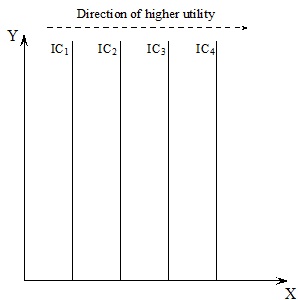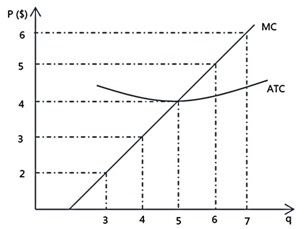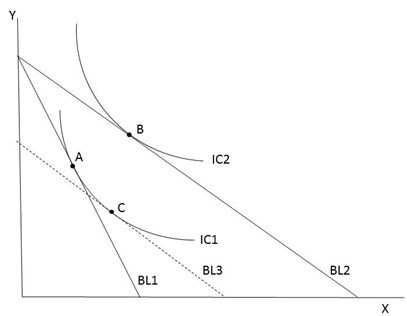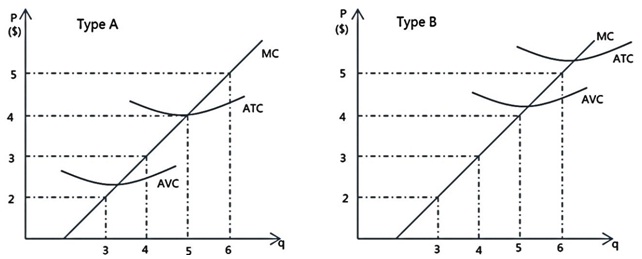MULTIPLE CHOICE QUESTIONS:
Question 1. Each year on her birthday, Amber buys herself one piece of cheesecake. Suppose Amber notices that this year she has to pay less in the store for her cheesecake than she had to last year. Furthermore, she heard on the news that this year the overall price level in the country has gone up as compared to last year. What can you conclude about the real price of cheesecake?
a. The real price of cheesecake is higher this year than it was last year.
b. The real price of cheesecake is lower this year than it was last year.
c. The real price of cheesecake is the same this year as it was last year.
d. There is not enough information to answer this question.
Question 2. Which of the following statements is false?
a. If Andrew’s income elasticity of demand for good X is equal to zero, Andrew’s demand for good X would not be affected if he suddenly loses his job.
b. For Mary, honey is a substitute for sugar. Then, her cross-price elasticity of demand for honey and sugar must be positive.
c. The Internet has made it easier for people to search for a large number of products on websites like eBay and Amazon. This should result in a higher price elasticity of demand for many goods.
d. For John, apples are an inferior good. Then, his income elasticity of demand for apples must be positive.
Use the following information to answer the next three questions.
Every August during the period 2006 – 2009, Nick made a trip from Chicago to Bulgaria. He kept his flight ticket receipts and is now trying to compare the real prices of tickets. This table summarizes all the information that he has, where the CPI uses a scale factor of 100 and is calculated using 2006 as the base year:
Year Nominal Price Consumer Price Index
2006 $800
2007 $960 120
2008 $1080 150
2009 $1200
Question 3. What is the percentage increase in the real price of the ticket from 2006 to 2007?
a. The real price decreased by 20%.
b. The real price did not change.
c. The real price increased by 16.67%.
d. The real price increased by 20%.
Question 4. Suppose Nick also knows that there was 0% inflation between 2008 and 2009. What is the real price of the ticket in 2009?
a. The real price in 2009 is $800.
b. The real price in 2009 is $1080.
c. The real price in 2009 is $1200.
d. There is not enough information to answer this question.
Question 5. Suppose Nick would like to use 2008 as the base year instead of 2006. What is the real price of the ticket in 2007 using 2008 as the base year?
a. The real price of the ticket in 2007 using 2008 as the base year is $640.
b. The real price of the ticket in 2007 using 2008 as the base year is $800.
c. The real price of the ticket in 2007 using 2008 as the base year is $960.
d. The real price of the ticket in 2007 using 2008 as the base year is $1200.
Use the following diagram to answer the next question:

Question 6. What can you conclude about goods X and Y from the above diagram?
a. The cross-price elasticity of demand for goods X and Y is equal to positive infinity.
b. The income-elasticity of demand for good Y is positive.
c. The cross-price elasticity of demand for goods X and Y is equal to zero.
d. The cross-price elasticity of demand for goods X and Y is equal to negative infinity.
Question 7. Which of the following is most likely to be considered a typical firm in a perfectly competitive industry?
a. Microsoft Corporation
b. A wheat farmer in Wisconsin
c. University of Wisconsin
d. A Pizza Hut on campus
Question 8. Suppose you have to analyze Tom’s consumption of pens and pencils for a given level of income and where the prices of pens and pencils are constant. If Tom consumes 5 pens and 10 pencils, his marginal utility per dollar for the last pen is higher than his marginal utility per dollar for the last pencil. If Tom is spending his entire income on pens and pencils and if his preferences are described by decreasing marginal utility, what can you conclude? Holding everything else constant,
a. Tom should consume more than 5 pens and fewer than 10 pencils.
b. Tom should consume more than 10 pencils and fewer than 5 pens.
c. Tom should consume an equal amount of pens and pencils.
d. Tom should consume 10 pens and 5 pencils.
Question 9. (Note: This question was changed after the exam to address the mistake in answer d.) Pizza and beer are complementary goods for consumers in a local market. The beer industry, which has constant marginal cost, is perfectly competitive and is now in long run equilibrium. If the market price of pizza permanently decreases, which of the following statements is correct about the beer market in the short run?
a. The market price of beer falls and each firm produces less beer.
b. The market price of beer does not change, but the quantity increases because new firms enter the beer industry.
c. The market price of beer does not change, but the quantity decreases because some firms exit the industry.
d. The market price of beer does not change and each firm produces more beer.
Question 10. The market for telephones is in equilibrium when the government decides to levy an excise tax of $5 per telephone on consumers. If at the initial equilibrium point consumer demand is inelastic and producer supply is unit elastic, which of the following could describe the tax incidence?
a. Consumers pay 100% of the tax incidence.
b. Consumers pay 20% and producers pay 80% of the tax incidence.
c. Consumers pay 80% and producers pay 20% of the tax incidence.
d. Consumers pay 0% of the tax incidence.
Question 11. Consider the market for Badgers football tickets. The market is in equilibrium and 100 tickets are sold at a price of $50 per ticket. Then, the university decides to impose an excise tax of $6 per ticket. After the imposition of the tax, 90 tickets are sold. With this excise tax consumer tax incidence is equal to $180 and producer tax incidence is equal to $360. What are the price elasticities of supply and demand at the old equilibrium point of 100 tickets and a price of $50? Use the point elasticity of demand formula to calculate these elasticities.
a. The elasticity of supply is 5/4 and the elasticity of demand is 5/2.
b. The elasticity of supply is 5/2 and the elasticity of demand is 5/4.
c. The elasticity of supply is 2/5 and the elasticity of demand is 1/5.
d. The elasticity of supply is 1/5 and the elasticity of demand is 1/10.
Use the following table to answer the next three questions.
Quantity Fixed Cost ($) Total Cost ($)
1 20 40
2 20 50
3 20 60
4 20 100
5 20 150
Question 12. What is the firm’s average variable cost (AVC) when the firm is producing 2 units?
a. AVC = $15 per unit of output
b. AVC = $17.50 per unit of output
c. AVC = $27.50 per unit of output
d. AVC = $30 per unit of output
Question 13. When the firm increases production from 3 to 4 units, what is its marginal cost (MC)?
a. MC = $20 per unit of output
b. MC = $40 per unit of output
c. MC = $10 per unit of output
d. MC = $25 per unit of output
Question 14. Assuming the firm can produce fractions of a good, at what quantity or range of quantities does the minimum average total cost (ATC) occur?
a. At Q = 1
b. Between Q = 1 and Q = 2
c. At Q = 2
d. Between Q = 2 and Q = 4
Question 15. Suppose that demand is more elastic than supply. If the government imposes an excise tax, which of the following is true?
a. Imposing the tax on consumers maximizes government tax revenue.
b. Imposing the tax on producers maximizes government tax revenue.
c. Splitting the tax evenly between consumers and producers maximizes tax revenue.
d. The government earns the same amount of tax revenue regardless of whether it imposes the tax on consumers or producers.
Question 16. Suppose that in the long run, if a firm increases its output from 50 to 80 units, this causes its total cost to increase from $1200 to $1500. Given this information and holding everything else constant, this firm exhibits:
a. Decreasing returns to scale
b. Increasing returns to scale
c. Constant returns to scale
d. Decreasing marginal product of labor
Question 17. Suppose the marginal cost curve is increasing. If at a quantity q* the marginal cost curve is above the average total cost curve, we can conclude that:
a. q* is larger than the quantity at which the average total cost curve achieves its minimum.
b. q* is smaller than the quantity at which the average total cost curve achieves its minimum.
c. At q* the average total cost curve has a negative slope.
d. At q* the marginal cost curve has a negative slope.
Question 18. Suppose Maggie always consumes one coffee with two muffins. That is, for Maggie one coffee and two muffins are perfect complements. Maggie’s income for coffee and muffins is $21. One cup of coffee costs $4 and one muffin costs $5. Assuming she can consume fractions of both goods, which one of the following bundles is Maggie most likely to choose?
a. 1 coffee and 3.5 muffins
b. 4 coffees and 1 muffin
c. 1.5 coffees and 3 muffins
d. 2 coffees and 4 muffins
Question 19. In a perfectly competitive industry, the typical firm’s average cost curve is pictured on the graph below. The table below gives the market demand schedule. Using this information, what is the long run number of firms in the industry?
Market Demand
Price ($) Quantity
6 140
5 180
4 200
3 240
2 270

a. In the long run, there will be 30 firms in the industry.
b. In the long run, there will be 40 firms in the industry.
c. In the long run, there will be 60 firms in the industry.
d. There is not enough information to answer this question.
Question 20. Milk is supplied by a perfectly competitive industry and its quantity is measured in gallons. The demand for milk is given by P = 20 – 2Q. If the average total cost of producing milk is constant and equal to $5, the equilibrium quantity of milk in the market in the long run is:
a. 5 gallons of milk.
b. 7.5 gallons of milk.
c. 10 gallons of milk.
d. There is not enough information given to determine the equilibrium quantity of milk.
Use the following graph, which represents Nate’s preferences, to answer the next three questions. As usual, here BL stands for budget line and IC stands for indifference curve.

Question 21. What must have happened for the budget line to change from BL1 to BL2?
a. The price of good X increased and the price of good Y stayed the same.
b. The price of good Y decreased and the price of good X stayed the same.
c. The price of good X decreased and the price of good Y stayed the same.
d. Nate’s income for good X and good Y increased while prices stayed the same.
Question 22. Which of the following statements is true?
a. The transition from point A to point C is due to the income effect because at point C, Nate consumes more of good X that he did at point A.
b. The transition from point C to point B is due to the income effect because at point B, Nate consumes more of both good X and good Y.
c. The transition from point C to point B is due to the substitution effect because at point B, Nate consumes more of good X than he did at point A.
d. The transition from point A to point C is due to the income effect because at point C, Nate consumes less of good Y than he did at point A.
Question 23. Which of the following statements is true?
a. In terms of his total utility, Nate is better off at point C than he is at point A.
b. Nate’s income at BL1 is less than his income at BL2.
c. Nate would prefer point C to point B, but he cannot afford to purchase point C.
d. Nate is indifferent between point A and point C in terms of his total utility.
Use the following table to answer the next two questions.
Here, Q stands for quantity and MU stands for marginal utility measured in utils.
QX 1 2 3 4 5 6 7 8
MUX 8 7 6 5 4 3 2 1
QY 1 2 3 4 5 6 7 8
MUY 6 5.5 5 4.5 4 3.5 3 2.5
Question 24. What is the total utility derived from consuming 3 units of X and 1 unit of Y?
a. The total utility is 11 utils.
b. The total utility is 12 utils.
c. The total utility is 25 utils.
d. The total utility is 27 utils.
Question 25. Suppose the table represents your preferences for goods X and Y. If the price of good X is $2, the price of good Y is $3, and your income is $14, which of the following bundles is the optimal bundle to purchase given these four choices? (Hint: find the bundle that comes closest to satisfying the consumer optimum requirement.)
a. 6 units of X and 4 units of Y
b. 5 units of X and 1 units of Y
c. 2 units of X and 3 units of Y
d. 1 unit of X and 4 units of Y
Use the following information and graphs to answer the next two questions.
A perfectly competitive industry consists of 5 firms with Type A technology and 5 firms with Type B technology. The cost curves for a representative firm of each type are given in the figures below.

Question 26. Which of the following is correct in the short run?
a. At a price of $4, no firms are producing, so the total industry supply equals 0.
b. At a price of $4, only firms with type B technology produce a positive quantity.
c. At a price of $3, the total industry supply is equal to 20 units.
d. At a price of $2, the total industry supply is equal to 20 units.
Question 27. If the short-run equilibrium price is $3, which of the following statements is true?
a. Firms of both types are earning negative profits.
b. Only firms of type A are earning positive profits.
c. Firms of type B earn enough profits to cover their fixed costs, but not enough to cover their variable costs.
d. Firms of both types are earning positive profits.
Use the following information to answer the next three questions.
Burton Snowboards sells two types of snowboards – Professional and Standard. Initially, the price of the Professional board is $100, but Burton decides to decrease it for the Thanksgiving sale. This results in a 10% decrease in the quantity demanded for the Standard board. You also know that the cross-price elasticity of demand for Standard and Professional snowboards is equal to 0.5.
Furthermore, at the new price, a total of 100 Professional boards are sold. You are told that using the arc elasticity formula, the price elasticity of demand for the Professional board from the old to the new price is equal to 1.
Question 28. What is the new price of the Professional snowboard after the decrease? (Hint: You have to use the regular percentage change formula here)
a. The new price of the Professional snowboard is $90.
b. The new price of the Professional snowboard is $250/3.
c. The new price of the Professional snowboard is $80.
d. The new price of the Professional snowboard is $50.
Question 29. What is the equation for the demand curve for Professional boards?
a. P = 180 – Q
b. P = 190 – Q
c. P = 150 – Q
d. P = 200 – 2Q
30. If Burton Snowboards wants to maximize total revenue in the market for Professional boards, how many Professional boards should they sell?
a. They should sell 75 Professional boards.
b. They should sell 90 professional boards.
c. They should sell 95 Professional boards.
d. They should sell 100 Professional boards.